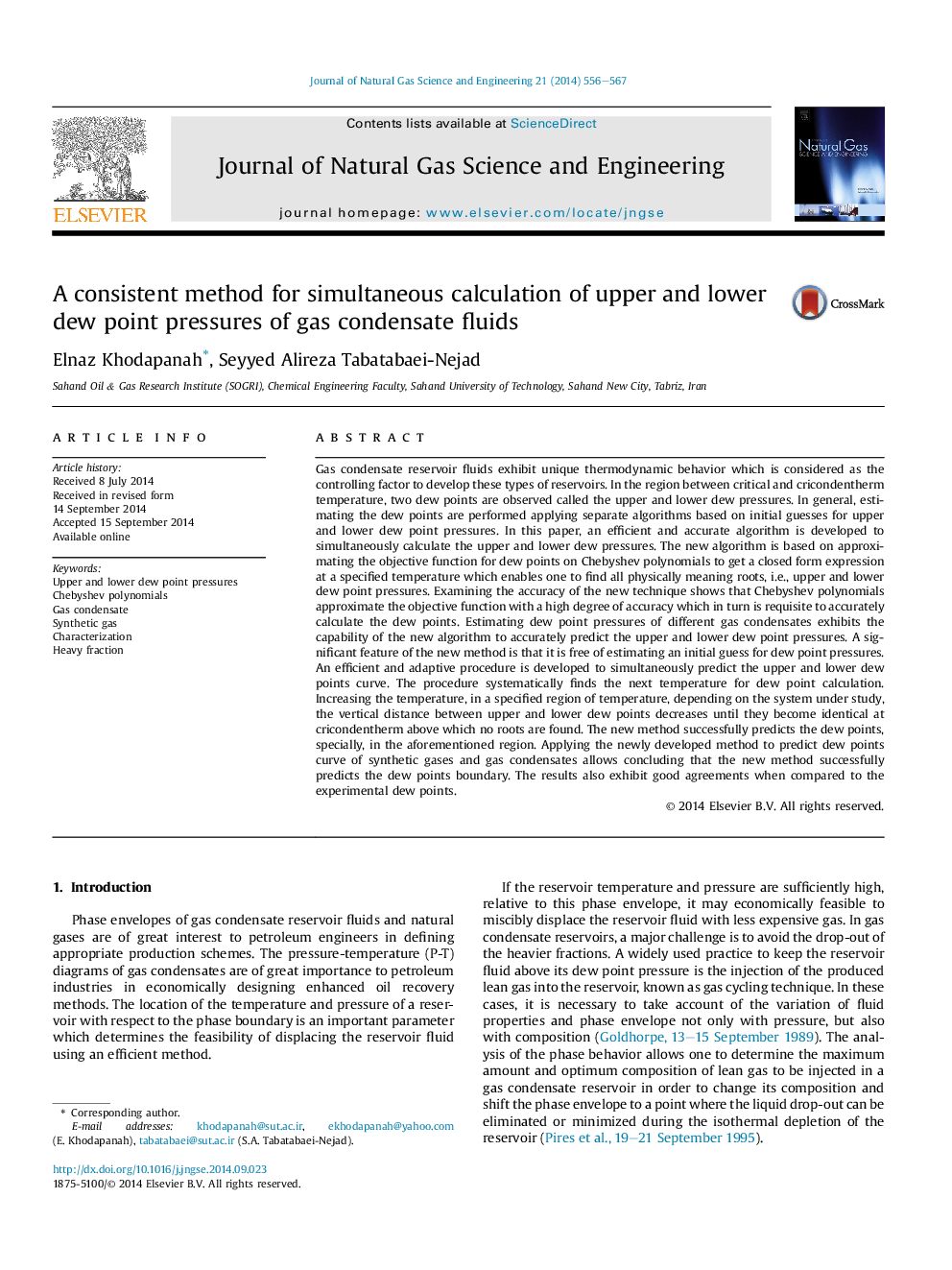| Article ID | Journal | Published Year | Pages | File Type |
|---|---|---|---|---|
| 8129297 | Journal of Natural Gas Science and Engineering | 2014 | 12 Pages |
Abstract
Gas condensate reservoir fluids exhibit unique thermodynamic behavior which is considered as the controlling factor to develop these types of reservoirs. In the region between critical and cricondentherm temperature, two dew points are observed called the upper and lower dew pressures. In general, estimating the dew points are performed applying separate algorithms based on initial guesses for upper and lower dew point pressures. In this paper, an efficient and accurate algorithm is developed to simultaneously calculate the upper and lower dew pressures. The new algorithm is based on approximating the objective function for dew points on Chebyshev polynomials to get a closed form expression at a specified temperature which enables one to find all physically meaning roots, i.e., upper and lower dew point pressures. Examining the accuracy of the new technique shows that Chebyshev polynomials approximate the objective function with a high degree of accuracy which in turn is requisite to accurately calculate the dew points. Estimating dew point pressures of different gas condensates exhibits the capability of the new algorithm to accurately predict the upper and lower dew point pressures. A significant feature of the new method is that it is free of estimating an initial guess for dew point pressures. An efficient and adaptive procedure is developed to simultaneously predict the upper and lower dew points curve. The procedure systematically finds the next temperature for dew point calculation. Increasing the temperature, in a specified region of temperature, depending on the system under study, the vertical distance between upper and lower dew points decreases until they become identical at cricondentherm above which no roots are found. The new method successfully predicts the dew points, specially, in the aforementioned region. Applying the newly developed method to predict dew points curve of synthetic gases and gas condensates allows concluding that the new method successfully predicts the dew points boundary. The results also exhibit good agreements when compared to the experimental dew points.
Related Topics
Physical Sciences and Engineering
Earth and Planetary Sciences
Earth and Planetary Sciences (General)
Authors
Elnaz Khodapanah, Seyyed Alireza Tabatabaei-Nejad,
